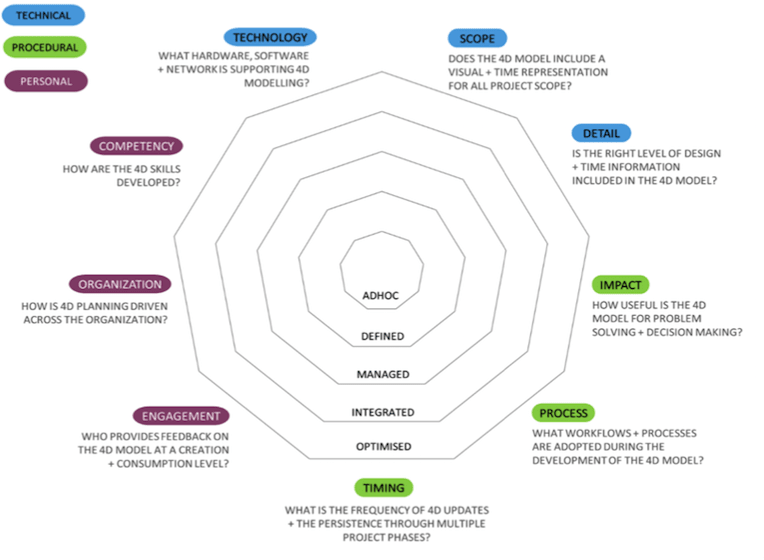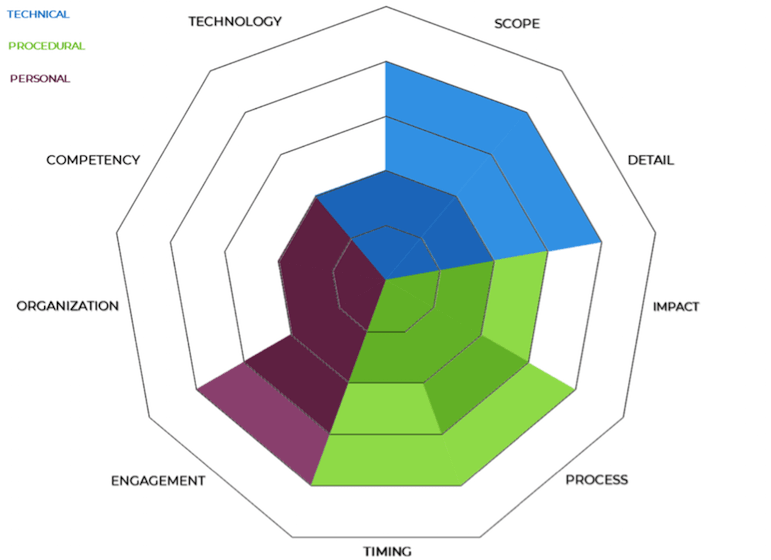 Australia
Australia
 Australia
Australia

It is best to build first digitally, according to Mark Swallow, Kristina Henkai and James Bowles at the 4D Construction Group. Here they detail the best practice for adopting and implementing 4D planning.
The process of delivering construction projects is complex, the need to co-ordinate and communicate among project stakeholders is therefore vital to success. Construction is also dynamic in its nature, with projects often susceptible to cost and time overruns and high safety risks. It is therefore essential to plan foreseeable events and strategise construction methodology while considering all aspects of site restraints.
To achieve this, planning techniques such as Gantt charts have traditionally been used within the construction industry. However, these isolated documents often make it difficult to visualise the work sequencing and communicate this effectively. Technological advancements in 4D modelling and planning software presents the construction industry with opportunities to improve project delivery.
By implementing 4D planning, organisations are able to build digitally first - and therefore reduce risk.
What is 4D planning?
As a base definition, 4D planning involves dynamically linking the information model components with schedule information, thus creating digital construction sequencing models. Although this definition focuses on the ‘sequencing’ and ‘scheduling’ elements, 4D offers more than a polished animation of the proposed works.
The ability to digitally plan and rehearse the build sequence provides a range of opportunities. Enhancing visualisation and improving communication, through the use of 4D, can bring forward the experience of teams, reduce safety risk and offer opportunities to improve project planning. Using 4D not only facilitates collaboration to develop optimum construction methodology, it also allows the team to identify safety issues, develop strategies for plant logistics and refine delivery timescales.
4D adoption and implementation
With the industry already demonstrating various benefits of implementing 4D planning and the encouragement of 4D within BIM standards PAS 1192-6:2018, this highlights the question “why are not all projects using 4D planning?”
First, one must consider the technological aspects including the availability, suitability and cost of software and hardware. Second, the processes of integrating this tool into planning practices, and third, the engagement, skills and knowledge of organisations and individuals.
For many organisations yet to start their journey, the questions would naturally be “what is the real value of implementing 4D?”, “how would an organisation start?” and “what is the best way to use 4D on projects?”
These complex questions are extremely important. The technical use of software applications and its integration into wider information management processes is key to implementation. Selecting the most suitable software while considering the cost, training required and how this process flows within the organisation or projects are all vital considerations.
The awareness of 4D and its value to the organisation and their projects is also an essential step to implementation. Education providers and industry alike have a core role in the wider digital transformation of the industry and the effective adoption of 4D tools and processes.
The traditional ‘resistant’ culture can be altered by effective engagement, developing skills and knowledge, introducing effective process and embedding 4D into projects. The up-skilling of industry professionals and introducing the ‘Minecraft generation’ to a technology-enriched industry is also important for the sustainable implementation of 4D.
For those already using 4D, the value will depend on how it is used. Organisations may not be aware of their maturity and therefore unable to benchmark or plan for further integration to maximise its value.
4D maturity matrix
Some of the critical questions of any successful implementation are understanding the starting state, specific goals and journey towards that end state. A 4D maturity matrix can assist with these questions in a repeatable way that can be used for benchmarking future projects. Understanding what the various maturity measures are and which level you are currently on can be a highly beneficial kick-start.
The matrix evaluates various maturity measures: technical, procedural and personal among five progressive levels: ad hoc, defined, managed, integrated and optimised. The details of all nine maturity measures can be viewed on the 4D Construction Group website.

The 4D maturity matrix, which evaluates technical, procedural and personal measures across five levels.
Two of the principal measures for assessing 4D are detail and engagement. When evaluating 4D detail, the question is: “Is the right level of design and time information included in the 4D model?” At the earliest maturity, the 4D detail may only include permanent design or only critical path items, however there is still an absence of time and/or design information (e.g. a pictorial method statement).
At the other end of the maturity spectrum is optimised, where the detail provides insights that are live and reflects reality. As the industry has shown, 4D maturity is not a simply about processes or data, but also about people and engagement, specifically “Who provides feedback on the 4D model at a creation and consumption level?”
Is the 4D model created by an individual that works in a silo and submits a 4D output to the project, or is it constantly built and reviewed from a live, multi-author collaborative team environment where operators, site management, planners and external parties are all involved? Most companies will fit somewhere in between these two bounds, perhaps even on the lower end of maturity. This is the value of the matrix, the ability to evaluate where the project currently is and start to build out incremental goals to progress and continually improve.
Thames Tideway Tunnel's journey
A key example for how the maturity matrix can and should be used for continuous improvement and capturing progress is CVB, the joint venture of Costain, Vinci Construction Grands Projects and Bachy Soletanche, constructing the east section of the Thames Tideway Tunnel. The maturity matrix is not intended to be a one-off evaluation and CVB is a prime example of the benefit of this type of application.
CVB started off its 4D journey four years ago, with a primary focus on visualisation and sequence of permanent works, ensuring that coordination and updates always occurred after major design and schedule changes. A group of key stakeholders shared a common vision and had effectively used 4D processes for validation and sequence, albeit with a small dedicated group.
Fast forward to today, notable and progressive improvements for the project can be seen in the maturity assessment, particularly in the scope, timing and engagement measures (see figure below). The project team chose to take a gradual implementation approach, as opposed to trying to implement everything to the maximum level 5 maturity and has seen major benefits from this decision.
The best illustration of this approach can be seen in the technical category where there is a gradual increase in content and level of detail of the 4D model and plan. In contrast to four years ago, where the primary focus was on simple critical permanent works, the project has evolved to include fabrication and assembly details to support organisational decisions about health and safety. The level of detail is deep enough that it can be used to visualise and analyse very specific risks and opportunities.

CVB's maturity evaluation: dark shades represent the beginning of the project and bright shades show the progression to the project’s current state.
Each measure is separately defined and yet can become a catalyst to other measures. Diving deeper into the engagement measure, the project at the beginning was rated as a level 3 and was only engaged with a specific small group. However, as the team began to expand the scope and frequency of updates and reviews, the content became more relevant to a wider audience. This subsequently moved the engagement measure to a level 4.
It may appear that a single jump in level is limited, however it should be noted that Level 4 is only possible once the 4D implementation has affected the organisational level, which is one of the bigger hurdles to overcome with an project initiative. It is a significant success to have CVB’s project and organisational executives actively engaged in not just the consumption, but also the creation, of a robust 4D plan.
Documenting and mapping the CVB journey within the Maturity matrix is an integral tool that the project can now use in future when embarking on similar 4D implementations and ultimately to create a sustainable and replicable success plan.
The 4D matrix provides a tool for organisations to assess their journey. Without these guard rails, all progress is truly subjective; how do you know if you have something ‘good’ or ‘better?’
Mark Swallow is a senior lecturer in construction project management at Sheffield Hallam University. Kristina Henkai is construction solutions engineer at Digital Construction Works. James Bowles is the founder of Freeform.